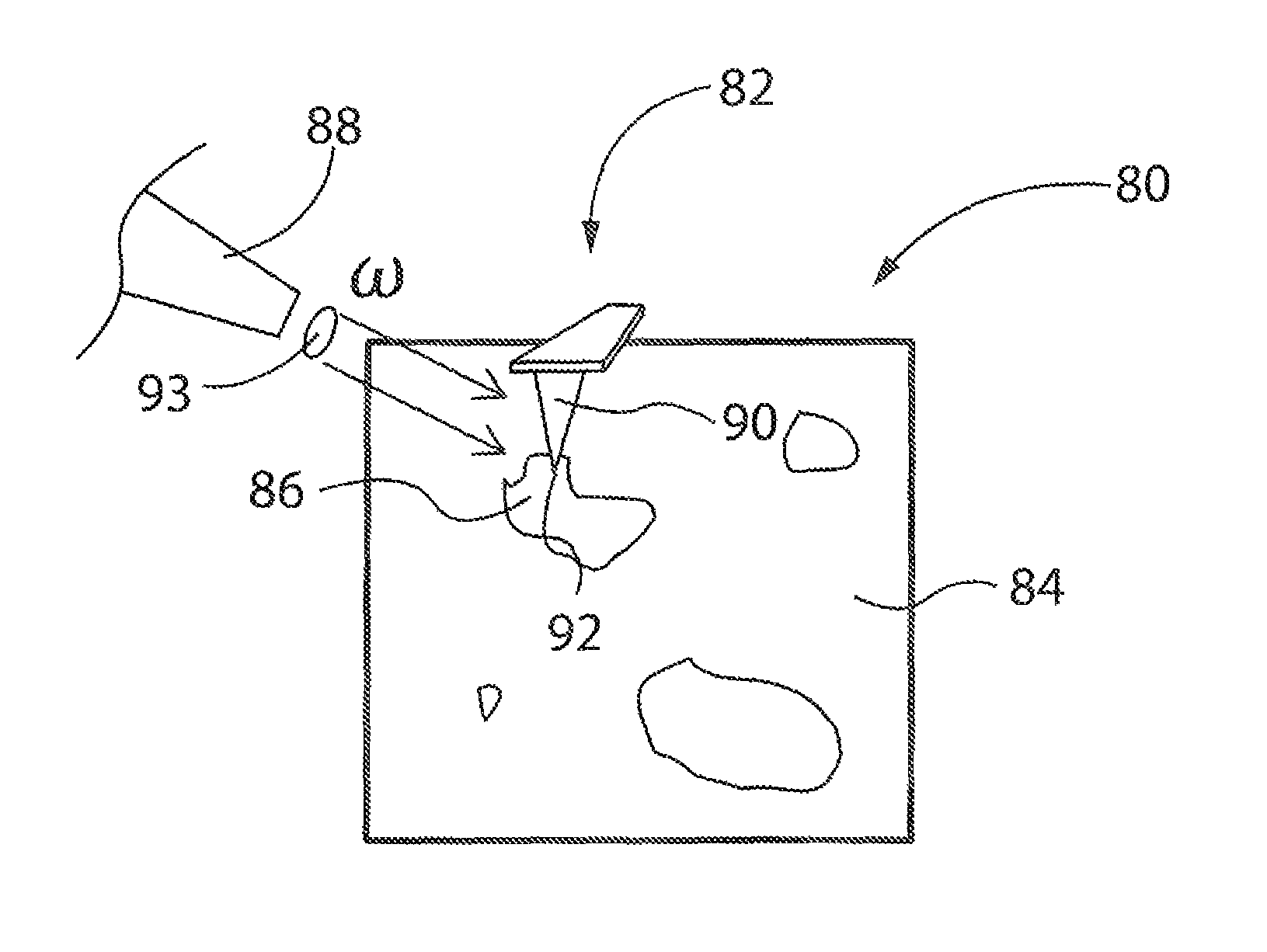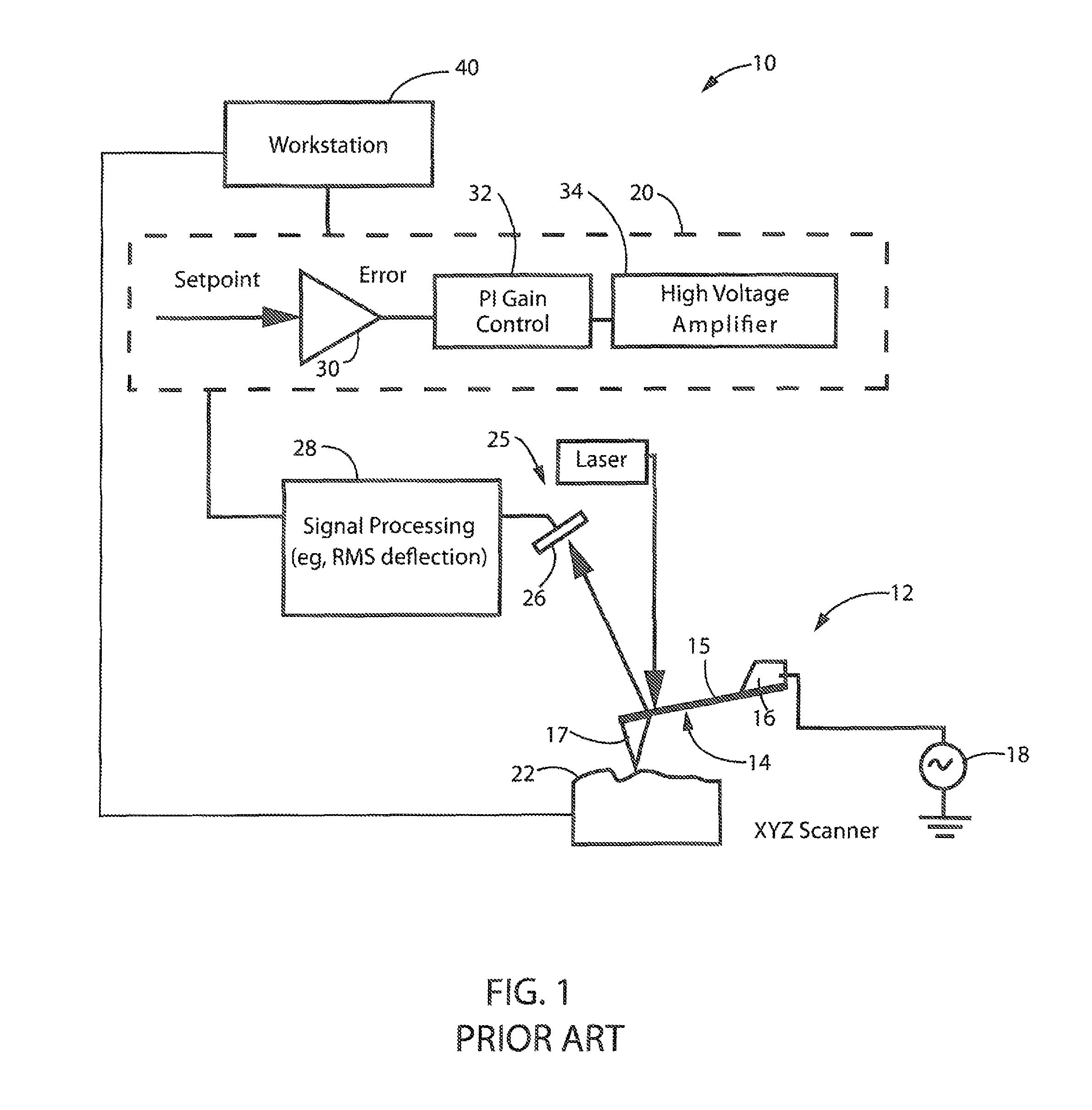Peakforce photothermal-based detection of IR nanoabsorption
a photothermal and nanoabsorption technology, applied in the field of making nanoidentification sample property measurements, can solve the problems of limited chemically specific information, difficult simultaneous spectroscopic implementations delivering chemical specificity and sensitivity on the molecular level, and limited optical diffraction, so as to achieve the effect of minimizing sample preparation and improving resolution
- Summary
- Abstract
- Description
- Claims
- Application Information
AI Technical Summary
Benefits of technology
Problems solved by technology
Method used
Image
Examples
Embodiment Construction
[0040]An improved apparatus and method of performing chemical identification of a sample includes combining monochromatic IR excitation at a selected frequency with Peak Force Tapping® (PFT) AFM configured for making mechanical property measurements. Purely mechanical detection of IR nanoabsorption by a sample is realized, thereby facilitating chemical nanoidentification of a region of the sample.
Nanoscale Chemical Identification
[0041]Turning initially to FIG. 2, a PeakForceIR apparatus 80 includes a PFT probe 82 that is introduced to a sample 84, and in particular, a region of interest 86. A source of IR electromagnetic radiation 88 directs light toward a tip 90 of probe 82, tip 90 including an apex of nanoscale dimensions 92 that primarily interacts with the surface of sample 84.
[0042]FIG. 3 illustrates more specifically the localized heating of the sample provided by the IR source. Source 88 directs IR light at a selected frequency, ω, toward sample 84 with an optical element (e....
PUM
| Property | Measurement | Unit |
|---|---|---|
| tip radius | aaaaa | aaaaa |
| temperature | aaaaa | aaaaa |
| temperature | aaaaa | aaaaa |
Abstract
Description
Claims
Application Information
 Login to View More
Login to View More - R&D
- Intellectual Property
- Life Sciences
- Materials
- Tech Scout
- Unparalleled Data Quality
- Higher Quality Content
- 60% Fewer Hallucinations
Browse by: Latest US Patents, China's latest patents, Technical Efficacy Thesaurus, Application Domain, Technology Topic, Popular Technical Reports.
© 2025 PatSnap. All rights reserved.Legal|Privacy policy|Modern Slavery Act Transparency Statement|Sitemap|About US| Contact US: help@patsnap.com



